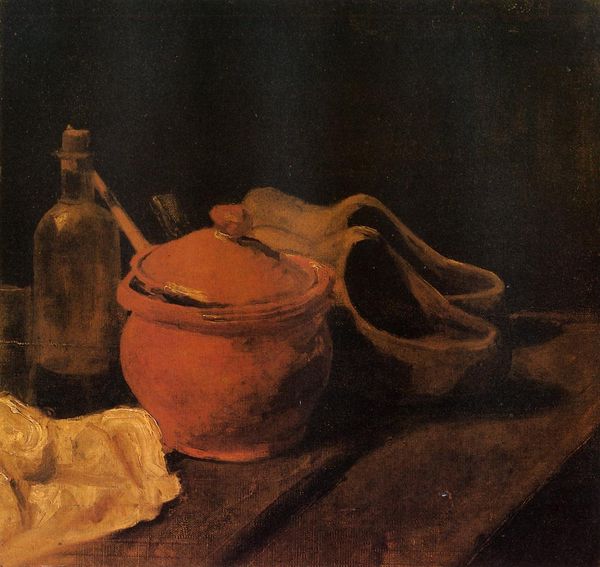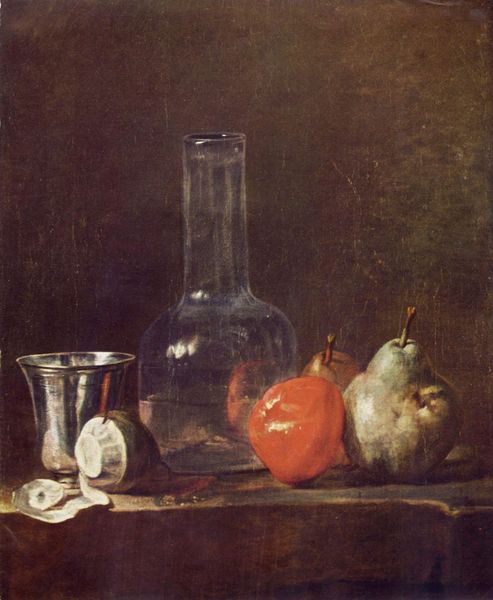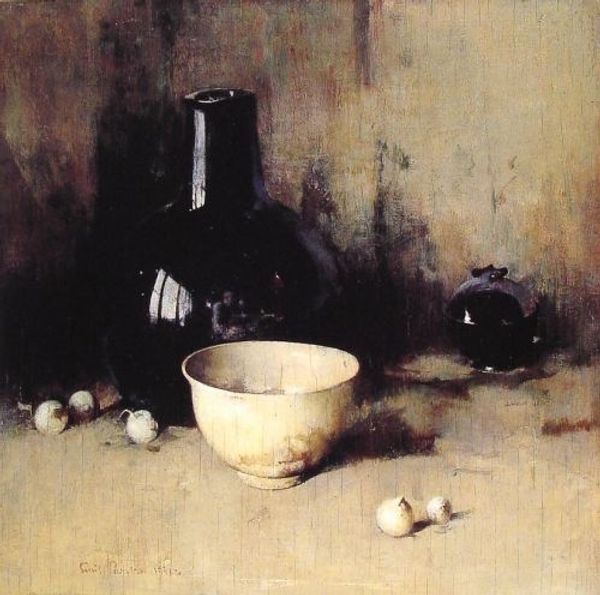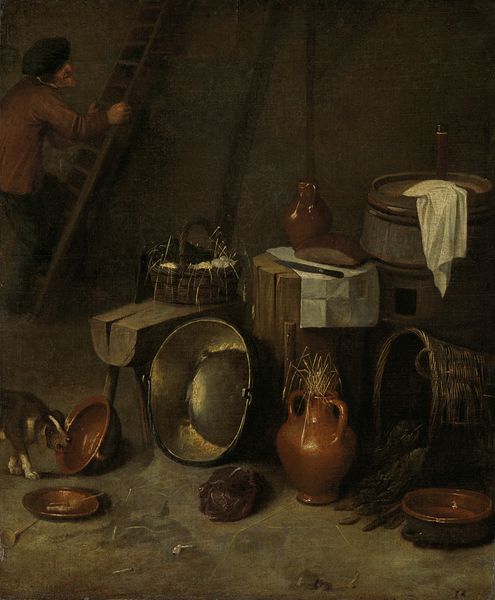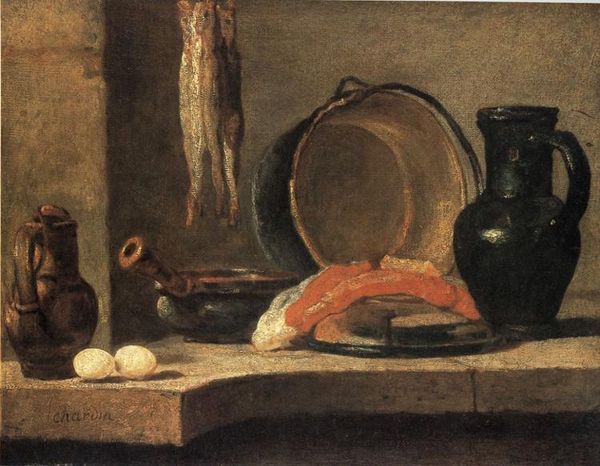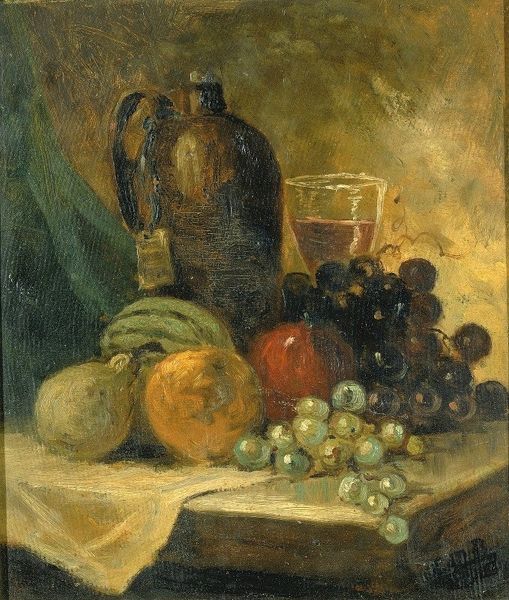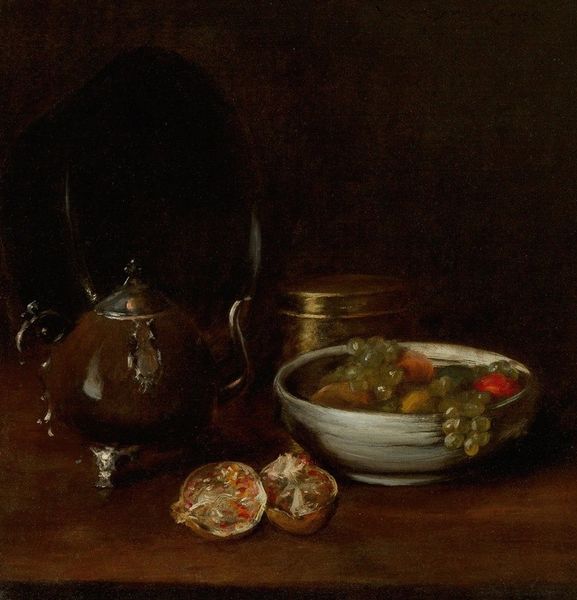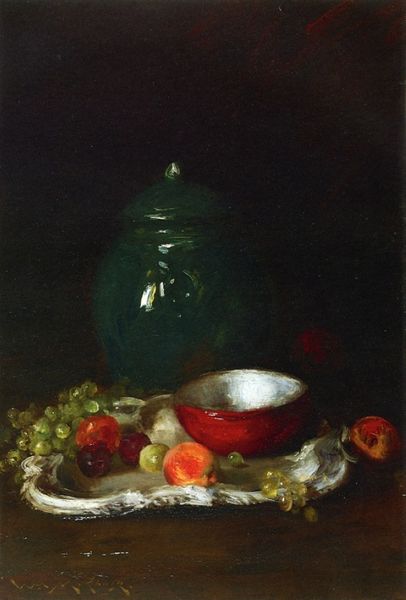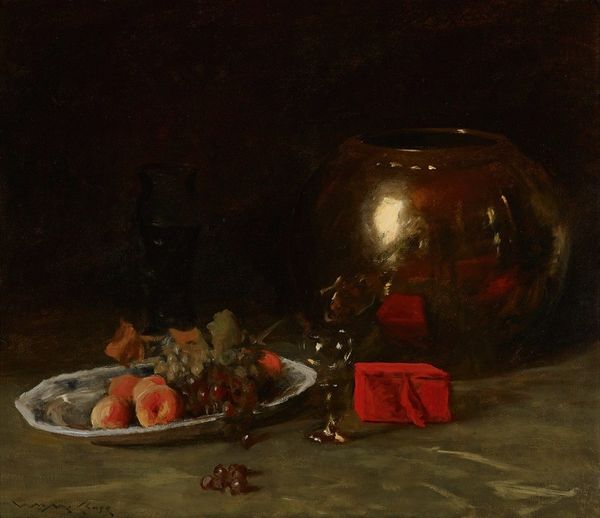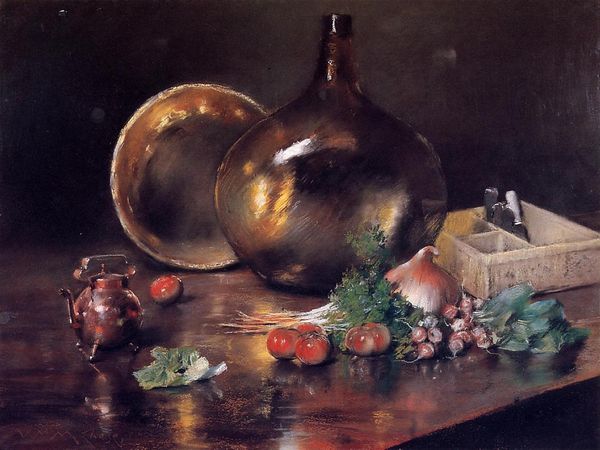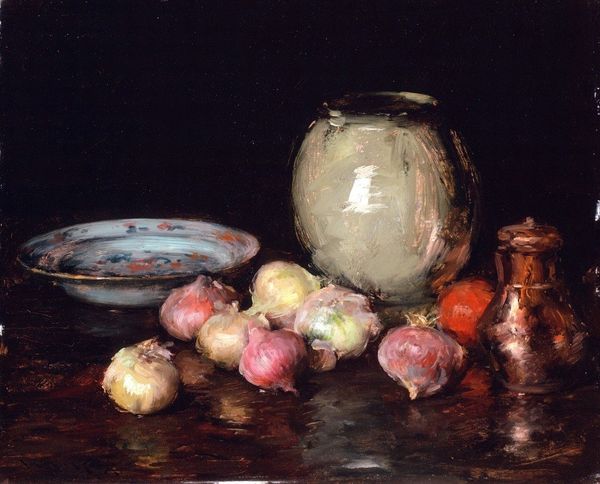
oil-paint
#
oil-paint
#
oil painting
#
genre-painting
#
realism
Dimensions: height 14.2 cm, width 18.9 cm, depth 4.5 cm
Copyright: Rijks Museum: Open Domain
Editor: Here we have François Bonvin’s "Still Life with Four Fruits, Glass and Pottery", likely painted sometime between 1827 and 1887. The subdued palette and humble subject matter create a rather contemplative mood. How do you interpret the significance of this arrangement in its historical context? Curator: That's an interesting starting point. This work exemplifies the Realist movement, emerging in response to the dominant Romantic and Academic styles favored by the French Salon. Bonvin, unlike his more avant-garde peers, tapped into the societal shift towards valuing everyday life. Notice how the objects -- simple fruits, common glassware and earthenware -- aren’t idealized. What does that say about the painting's intended audience? Editor: It suggests a movement away from aristocratic tastes and a growing interest in depicting the lives of ordinary people. Was Bonvin part of a specific artistic circle that promoted this new aesthetic? Curator: Absolutely. Bonvin, along with artists like Courbet and Millet, challenged the established hierarchy of subject matter. Genre scenes and still lifes like this one were becoming increasingly important, reflecting a burgeoning middle class and its own self-perception. It is also interesting to note the rise of bourgeois collecting at the time: these paintings would hang in private homes as a way for middle-class individuals to identify themselves in opposition to the aristocracy and their grand historical paintings. Editor: So, the simplicity of the still life becomes a statement in itself, rejecting academic conventions and embracing a more democratic approach to art. Curator: Precisely! And if we think of Realism's historical evolution into the later 19th Century movements, Impressionism, Post-Impressionism, then the implications for art production of this work are profound! What was once merely art "about stuff" is soon art about feeling, mood, and pure color sensation. Editor: That's a compelling connection. I hadn't considered the political dimension so explicitly, seeing this as an example of still-life paintings of objects only for artistic value. Thanks for illuminating the painting's societal message, giving me a new way of viewing the importance of still life at that moment. Curator: My pleasure, there’s always more than what meets the eye, and considering the socio-political conditions often helps understand the image and its message more clearly!
Comments
No comments
Be the first to comment and join the conversation on the ultimate creative platform.
